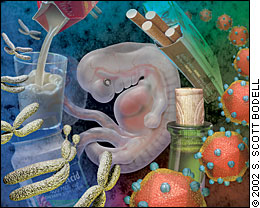
Am Fam Physician. 2002;65(12):2418

While Emily Brontë and a few other renowned writers have managed to thrive in social isolation, most writers and editors live by the mantra: “Every writer needs an editor, and every editor needs an editor.” I well remember hearing that charming chant from my editorial mentor, Mary Knickerbocker, one of AFP's previous managing editors. Although writers and editors who aspire to the field may have more highly developed written rather than verbal communication skills, and may prefer introspective thought to social interaction, it's naïve to think that journal editing is done in a vacuum.
Every now and then, AFP meets with an editorial candidate whose expectation is clearly that editing solely consists of working in solitude to produce pristine copy. Not so. Real life and real editing are much messier than that. While the desired outcome is, indeed, pristine copy, the editorial process involved in producing a large journal like AFP is more along the lines of a quilting bee. While some parts of the journal can be produced individually and in solitude, the “blocks” must be made according to an agreed-on pattern, and the final product requires the simultaneous netting together of many pieces. Quilters agree on the best design and colors to use, as well as the proper texture, fabric, border, batting, and quilting pattern, while editors agree on the proper form and content of information. When the pieces come together, it's a highly social process.
Work at AFP is done both in solitude and in teams. AFP's professional editors on staff have a flexible schedule and may choose to work at home on occasion. Some editors use floating “work-at-home”days when they have a tight writing deadline. Some editors apply for a telecommuting arrangement in which they work at home one to three days per week. One of AFP's professional editors, Barrett Schroeder, has continued working full-time as a telecommuter from another city after relocating with her husband. The various arrangements work well—editors satisfy their need for quiet time but return armed with their quilt blocks.
Every now and then we yearn for more contact with outside colleagues, and that's why we keep in touch with professional groups such as the Council of Science Editors (CSE) and the American Medical Writers Association (AMWA). There we find other quilters like ourselves and have an opportunity to learn what's going on in this world. Ms. Schroeder and I recently attended the annual CSE meeting, held this past May in San Diego. The meeting drew close to 300 attendees representing editorial offices from the United States, Canada, and Europe. This contact with editors of other medical journals and science publications makes us realize how much we can learn from our colleagues. Far from being a “rowdy” bunch, editors are nonetheless friendly and entertaining and no lightweights when it comes to intellectual interchange. We find our colleagues endearing and open to sharing resources.
The major conference theme, “Connecting Scientific Communities,” examined the power of written and electronic communication to link scientific communities in different countries and across different scientific disciplines. The keynote speakers offered updates on evidence-based medicine, alternative medicine and evidence, and visual communication in science. The meeting also offered a look at electronic publishing solutions, among many other topics in publishing. Changing technologies continually influence the way journals do business, and AFP is no exception as we continue to upgrade our technology. Although we came away with many useful tidbits of information, the meeting reminded us how much writers need editors, and editors need editors.